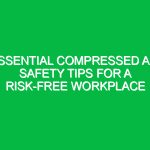Welcome Team!
Today, we’re here to conduct a toolbox talk on a crucial topic that affects each of us daily: Unsafe Conditions in the Workplace. Our goal is to foster a safe Environment where everyone can perform their tasks without fear of injury or harm. By understanding and addressing these unsafe conditions, we not only protect ourselves but also our coworkers and our organization as a whole. Let’s dive in!
Understanding Unsafe Conditions in the Workplace
Unsafe conditions in the workplace refer to any situation or environment that poses a risk to employee Safety. These conditions can range from poorly maintained equipment and inadequate lighting to hazardous materials and cluttered workspaces. Recognizing these conditions is the first step toward Prevention.
The Importance of Addressing Unsafe Conditions
Every year, countless workplace accidents occur due to unsafe conditions. According to the Occupational Safety and Health Administration (OSHA), many of these incidents are preventable. By addressing unsafe conditions, we not only comply with Regulations but also demonstrate our commitment to Safety. Here are a few reasons why it’s critical to address these issues:
- Protect Lives: The most important reason is to protect the health and safety of all employees. No job is worth risking your life or the lives of others.
- Enhance Productivity: A safe workplace boosts morale and productivity. Employees can focus on their tasks without the distraction of potential Hazards.
- Reduce Costs: Accidents can lead to expensive medical bills, legal fees, and insurance premiums. By minimizing unsafe conditions, we can significantly reduce these costs.
- Compliance with Regulations: Understanding and adhering to safety Standards is not just a good practice; it’s a legal obligation.
Common Unsafe Conditions in the Workplace
Now that we’ve established the importance of safety, let’s discuss some common unsafe conditions you might encounter in our workplace:
Poor Housekeeping
Cluttered work areas can lead to trips, slips, and falls. Make sure to keep your workspace tidy. Regularly remove any unnecessary items, and report any spills immediately.
Inadequate Lighting
Insufficient lighting can cause accidents and diminish productivity. Ensure all work areas are well-lit. If you notice dark spots, report them so that corrective action can be taken.
Faulty Equipment
Using malfunctioning equipment is a recipe for disaster. Always inspect your tools and machinery before use. If you identify any issues, take the equipment out of service and report it.
Hazardous Materials
Be aware of any materials that might be toxic or hazardous. Follow proper handling Procedures and wear Personal Protective Equipment (PPE) when necessary.
Improper Use of Personal Protective Equipment (PPE)
PPE is your first line of defense against workplace Hazards. Ensure you are wearing the correct gear for your job. If you’re unsure what’s required, ask your supervisor.
Identifying Unsafe Conditions
Identifying unsafe conditions is everyone’s responsibility. Here’s how you can actively participate:
Conduct Regular Inspections
Perform daily checks of your work area for hazards. Ask yourself:
- Are there any spills or debris on the floor?
- Is equipment functioning properly?
- Is there adequate lighting and ventilation?
Encourage Open Communication
Speak up if you notice something unsafe. Encourage your coworkers to share their observations and concerns. Remember, it’s better to report something and be wrong than to ignore it and risk an accident.
Engage in Safety Training
Participate in safety training sessions and workshops. These are designed to educate you about potential hazards and Safe Practices. Knowledge is a powerful tool in preventing accidents.
Best Practices for Maintaining a Safe Workplace
Here are some Best Practices to help maintain a safe workplace:
Develop a Safety Checklist
Create a checklist to help identify and address unsafe conditions. This can be done weekly or monthly, depending on your work environment. Ensure that all team members have access to this checklist.
Report Unsafe Conditions Promptly
Don’t wait for someone else to take action. If you see an unsafe condition, report it immediately. Your proactive approach can prevent injuries.
Participate in Safety Meetings
Engage in regular safety meetings. These meetings provide a platform for discussing safety concerns and brainstorming solutions. Your voice matters!
Real-Life Example: Lessons Learned
Let’s consider a hypothetical scenario to illustrate the importance of addressing unsafe conditions:
Imagine a warehouse where employees routinely stack boxes on top of each other, creating a tower that reaches the ceiling. One day, an employee pulls a box from the bottom, causing the entire stack to topple over. Fortunately, no one was injured, but this incident could have been avoided with proper stacking protocols and a culture of safety.
In this case, the unsafe condition was the improper stacking of boxes, which created a hazardous situation. If employees had communicated the risks and adhered to Safety Guidelines, the incident could have been prevented.
Regulations and Standards
It is essential to adhere to local, state, and federal regulations regarding Workplace Safety. Familiarize yourself with osha standards, as they provide guidelines for identifying and mitigating unsafe conditions. Additionally, your company likely has specific policies and procedures in place regarding Workplace Safety.
Compliance and Its Impact
Compliance with safety regulations not only protects employees but also shields the company from potential legal issues. Regular audits and training sessions ensure that everyone understands their responsibilities in maintaining a safe work environment.
Conclusion: Taking Safety Seriously
In conclusion, addressing unsafe conditions in the workplace is a collective responsibility that requires active participation from every employee. By identifying hazards, adhering to safety protocols, and engaging in open communication, we can create a safer work environment for everyone.
Thank you for being attentive during this toolbox talk. Let’s make a commitment to prioritize safety every day. Remember, safety is not just a set of rules; it’s a culture that we all contribute to. If you have any questions or need clarification on any points discussed, please do not hesitate to ask!


